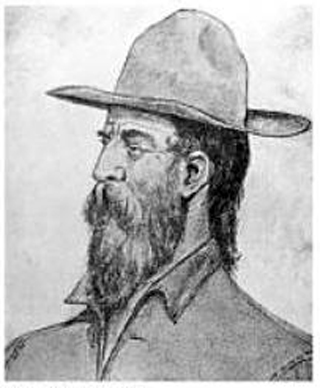American Explorers
Pauline Weaver
Notes:1800 - In 1800, Pauline Weaver was born in Tennessee to a white father and Cherokee mother. He is known in Arizona history as a famous guide and mountain man. Although originally named Paulino, he soon became known as Pauline. For a brief time he worked for the ...In 1800, Pauline Weaver was born in Tennessee to a white father and Cherokee mother. He is known in Arizona history as a famous guide and mountain man. Although originally named Paulino, he soon became known as Pauline. For a brief time he worked for the Hudson's Bay Company as a trapper, but he left the company to venture west. Show more Show less
From Backcountry Adventures Arizona
books.google.com/books?id=K5duDoiPh30C&pg=PA71
1832 - A trapper from Tennessee, Pauline Weaver was the first white man to visit the Hassayampa, having reached the rippling watercourse in 1832, after a trip to the Casa Grande Ruins. There, he placed his name high up on the crumbling walls and for years lived among the ...A trapper from Tennessee, Pauline Weaver was the first white man to visit the Hassayampa, having reached the rippling watercourse in 1832, after a trip to the Casa Grande Ruins. There, he placed his name high up on the crumbling walls and for years lived among the American Indians, learning their language and becoming acquainted with their version of what the word "Hassayampa" signified.
From 06/04/2008 - Hassayampa River lore steeped in...
www.viewnews.com/2008/VIEW-Jun-04-Wed-2008/Prime/21787849.html
Oct 1846 - Captain Philip St. George Cooke, who led a caravan composed of twenty-four wagons, 397 Mormon men, and five women west from Santa Fe late in October, 1846. Cooke's guides were two veteran trappers, Pauline Weaver and Antoine Robidoux, who took the Mormon ...Captain Philip St. George Cooke, who led a caravan composed of twenty-four wagons, 397 Mormon men, and five women west from Santa Fe late in October, 1846. Cooke's guides were two veteran trappers, Pauline Weaver and Antoine Robidoux, who took the Mormon Battalion across the Continental Divide near Guadalupe Pass at the junction of the modem boundaries of Arizona, New Mexico, and Sonora. From Father Kino's old rancho of San Bernardino near modern Douglas, Cooke's wagon ...
From Appendix A -
digital.hannibal.lib.mo.us/Rev%20Stevens/appendix.htm
Jan 1862 - The La Paz placers were found in January, 1862, by a party of trappers of which Pauline Weaver was a member, in what was named Arroyo de la Tenaja, seven miles east of the Colorado. The location of the field was shown by Weaver to Jose M. Redondo, a prominent ...The La Paz placers were found in January, 1862, by a party of trappers of which Pauline Weaver was a member, in what was named Arroyo de la Tenaja, seven miles east of the Colorado. The location of the field was shown by Weaver to Jose M. Redondo, a prominent Yuma pioneer, who on his first visit found rich ground, wherefrom he washed a two-ounce nugget. Within a few days, Redondo from Laguna headed a well-equipped party of forty miners, who were followed by at least 1500 ...
From Arizona, Prehistoric, Aboriginal, Pioneer, Modern
books.google.com/books?id=gb8UAAAAYAAJ&pg=PA106
May 1863 - The next party to enter this new region came in response to the letters left with the Pimas, and consisted of what was known as the "Peoples' Party" This party was organized by AH Peeples in May, 1863, and entered Arizona from California, by way of Yuma, where ...The next party to enter this new region came in response to the letters left with the Pimas, and consisted of what was known as the "Peoples' Party" This party was organized by AH Peeples in May, 1863, and entered Arizona from California, by way of Yuma, where they met Pauline Weaver, who had come by appointment, Peeples having written him from California. The party, with Weaver as guide, followed up the Colorado River to La Paz, where the Mexicans had been placer mining for ... From History of Arizona
books.google.com/books?id=YEoGHWCr5c4C&pg=RA1-PA247
The skirmish at Picacho Pass was the only Civil War battle fought in Arizona. The Picacho Pass skirmish warned Capt. Hunter of the California Column's approach, plus it delayed the Union Forces, preventing a surprise attack on Tucson. Col. Carleton had the column regroup at the Indian villages and the delay frustrated mountain man and scout Paulino Weaver who left the troops growling, "If you fellers can't find the road from here to Tucson, you can go to hell!" From California and the Civil War
The California Column and the March to Tucson, 1862
by Mr. Robert Flaherty
http://www.militarymuseum.org/CaliforniaColumn.html
Carleton who knew he would need Weaver, sent two of his friends after him and they talked him into returning. He remained chief of scouts until the end of the war. Meantime Hunter got word on May 1st that Sibley had been beaten badly at the Battle of Peralta on April 15 and was retreating toward Texas.
